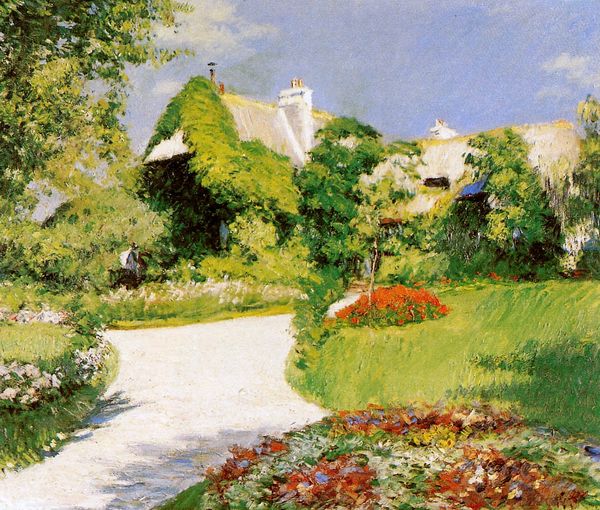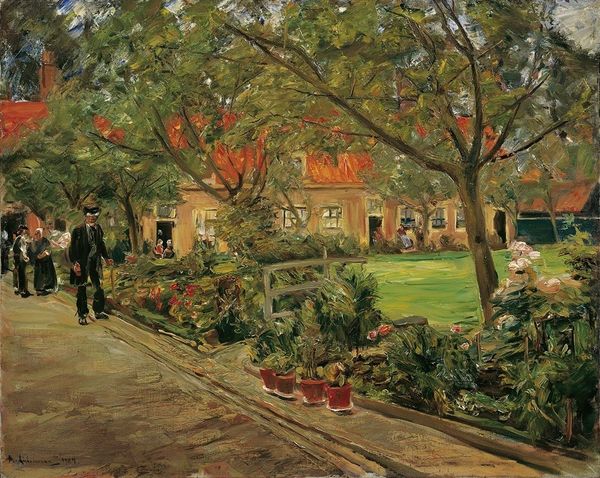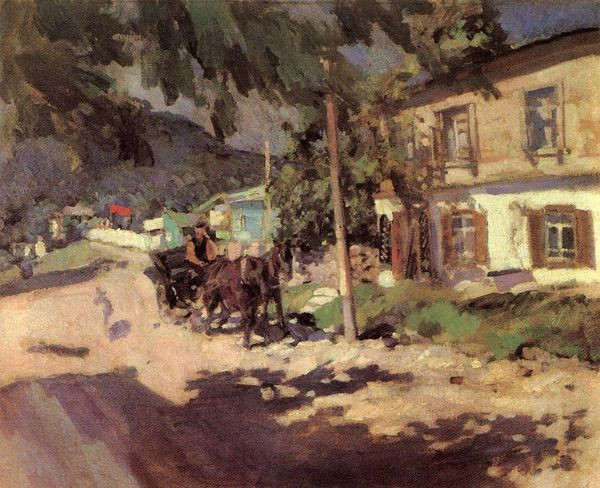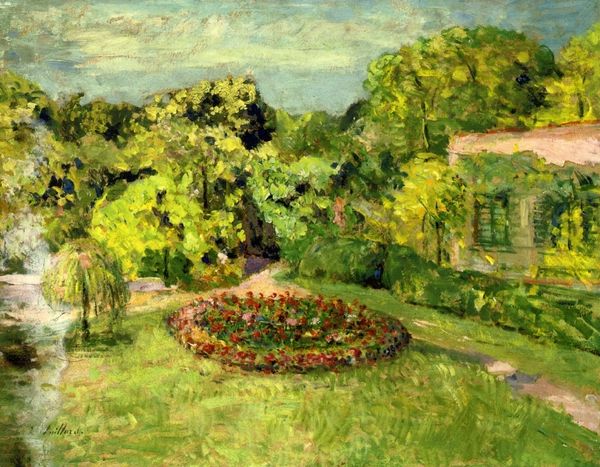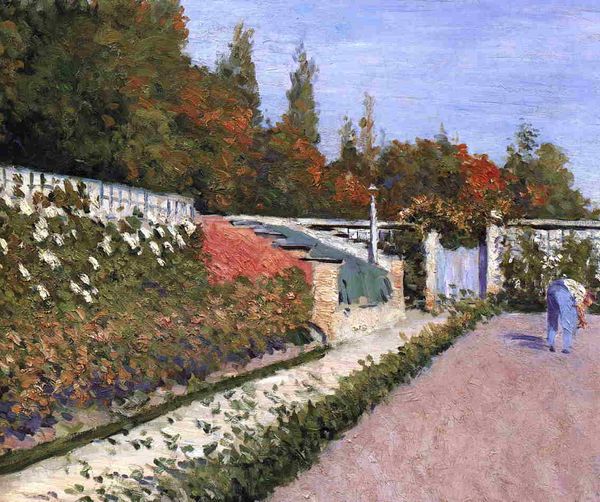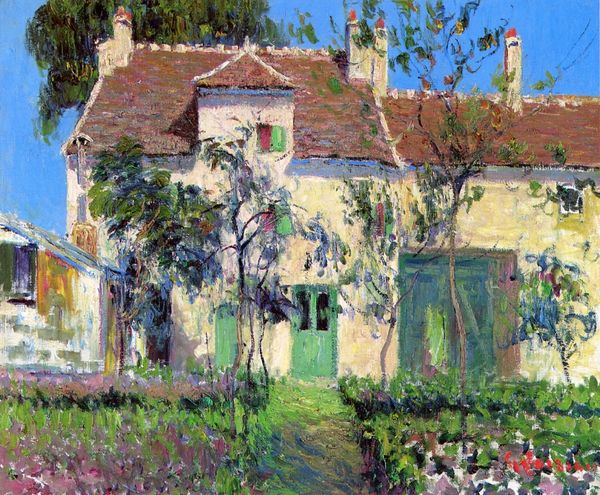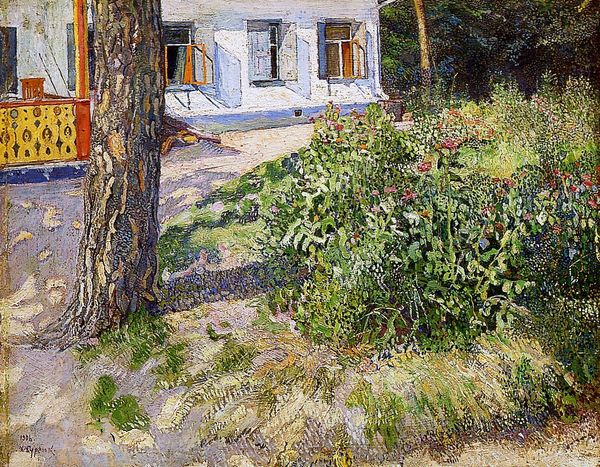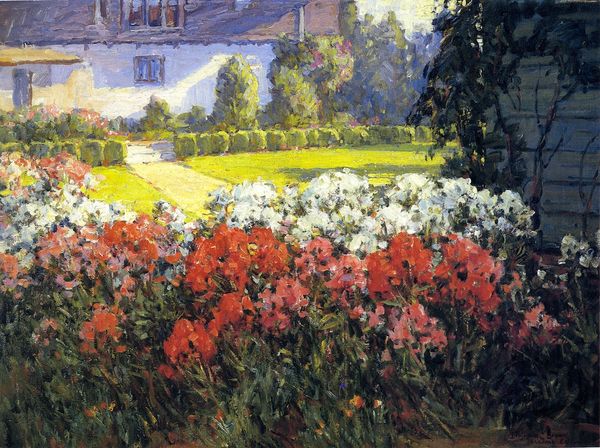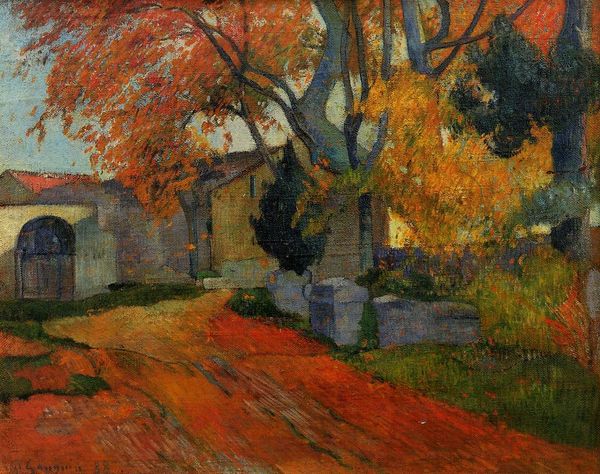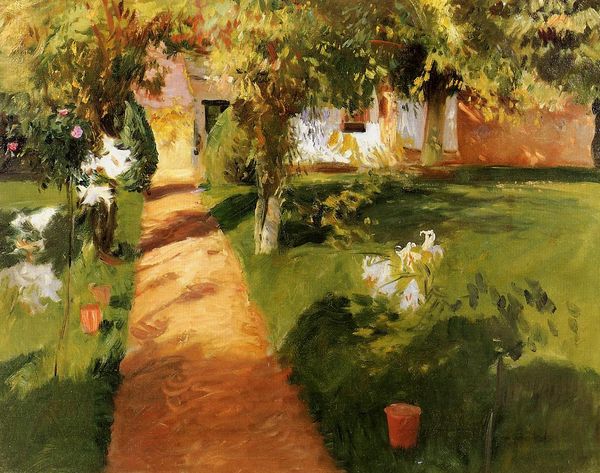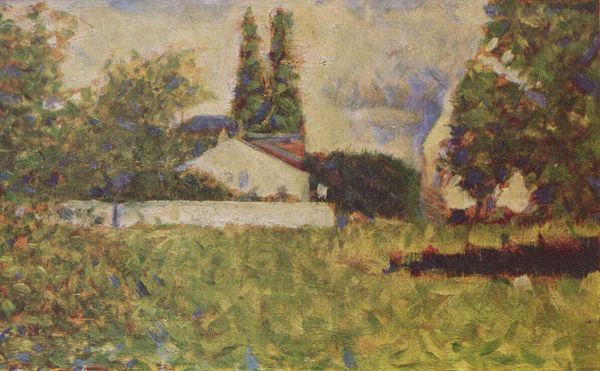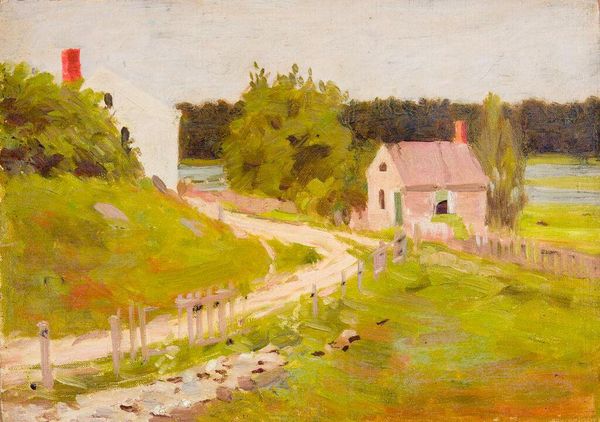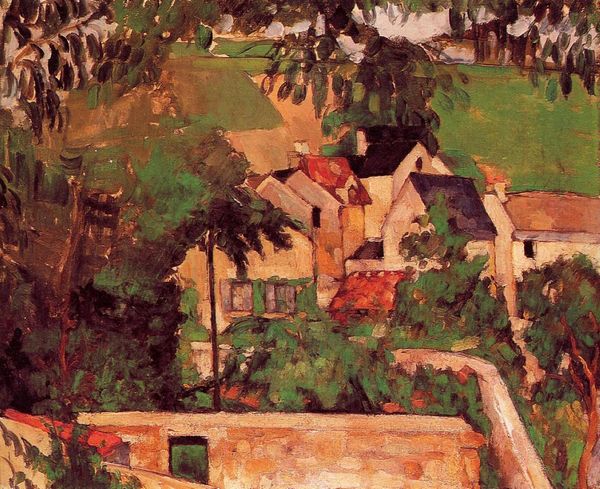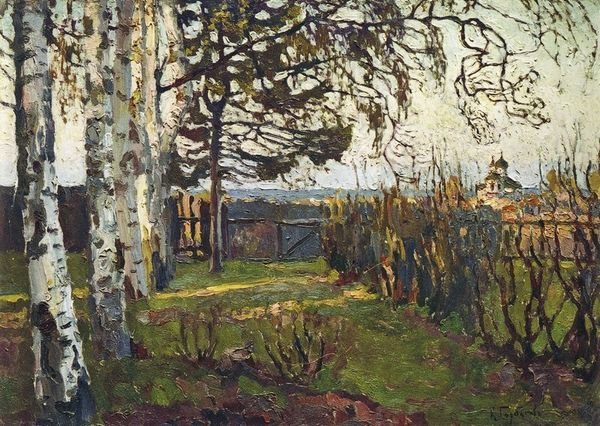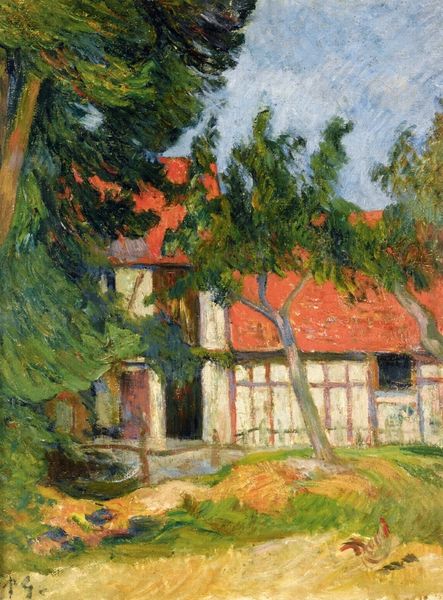
plein-air, oil-paint
#
garden
#
impressionism
#
impressionist painting style
#
plein-air
#
oil-paint
#
landscape
#
impressionist landscape
#
oil painting
#
building
Dimensions: 59 x 81 cm
Copyright: Public domain
Editor: Here we have Gustave Caillebotte's "Garden at Yerres," painted in 1876 using oil paints, en plein air. The vivid red flowerbed in the foreground immediately grabs your attention. It's interesting how the paint is applied so thickly. What stands out to you? Curator: I notice the deliberate composition. Consider how Caillebotte’s brushstrokes function not just to depict the scene but as units of labor themselves. The individual, almost mechanical, application of paint points to the burgeoning industrialization affecting artistic production at the time. Editor: That’s an interesting point! I hadn’t considered the act of painting itself as labor. How does that perspective change our view of the art? Curator: It redirects our focus from mere representation to the materiality of the paint and canvas, emphasizing the artist's physical involvement. It's not just a "garden;" it's an object produced with deliberate effort. We see here an engagement with commodity culture where artistic skill itself becomes a valuable material. Editor: So, he's making a statement about art's role in a changing industrial society? Curator: Precisely. By highlighting the tangible, material nature of the painting, he subtly critiques the traditional romantic notions of artistic genius. Consider also, what sort of labor and capital would be necessary to maintain the garden? And what does this say about social class at the time? Editor: Wow, I never would have considered that! The painting now seems more complex, almost like Caillebotte is engaging with societal shifts through his technique and subject. Curator: Exactly! By seeing the artist's hand and considering broader historical conditions of the time, we perceive Impressionism in terms of making and the circulation of materials and capital, which really reshapes our appreciation for the movement. Editor: Thanks. I’ll never see Impressionism the same way again!
Comments
No comments
Be the first to comment and join the conversation on the ultimate creative platform.
